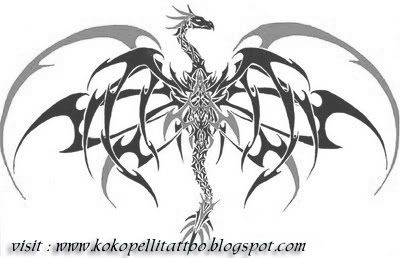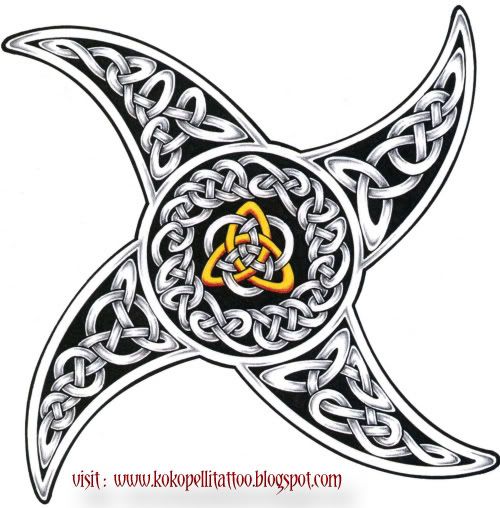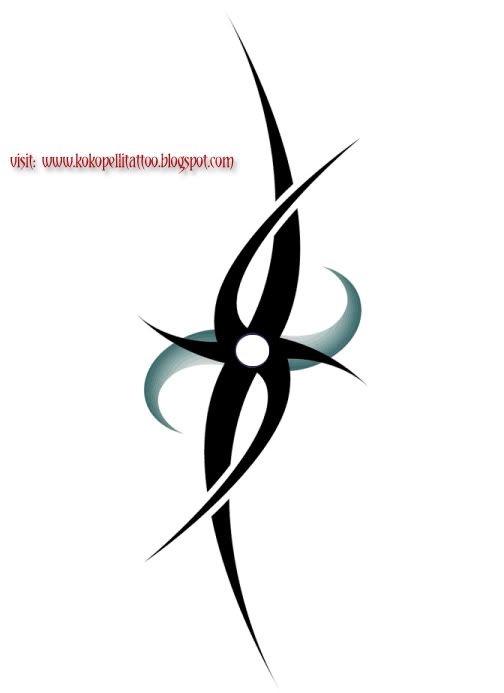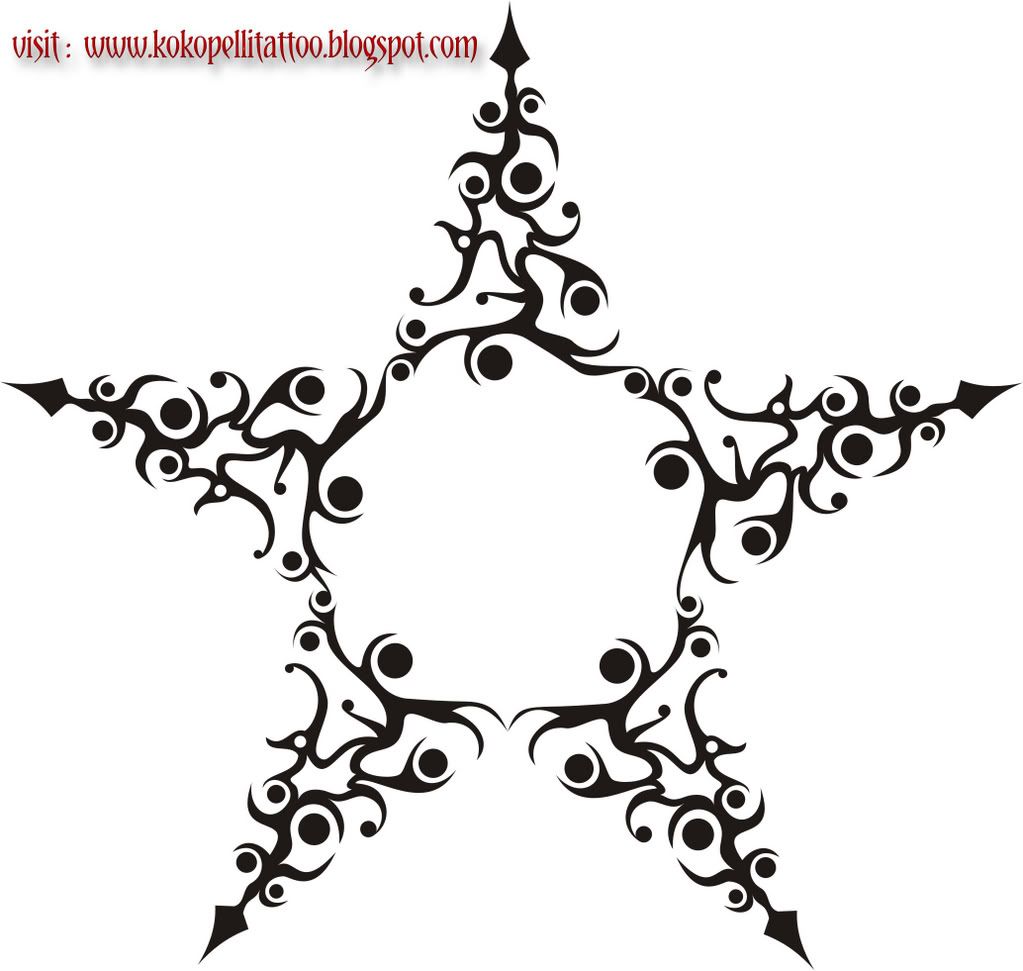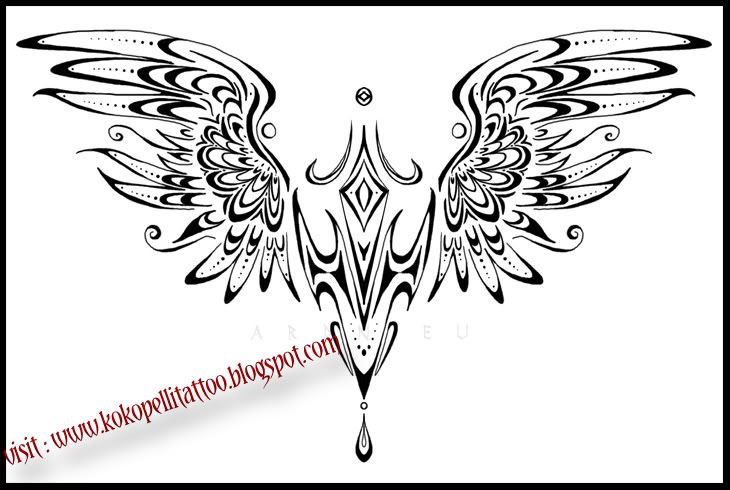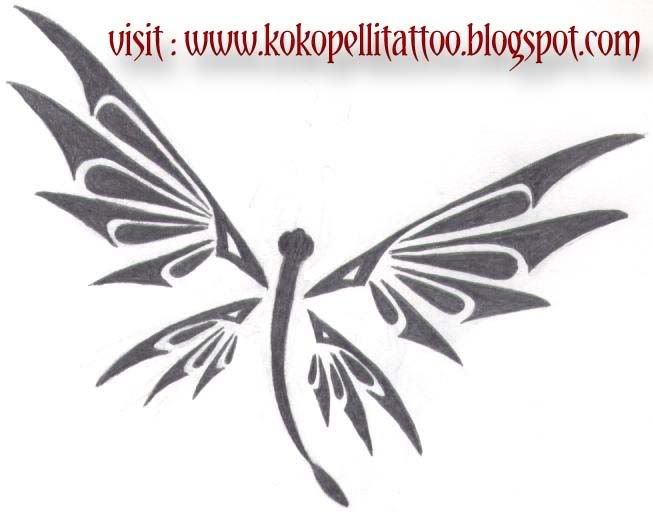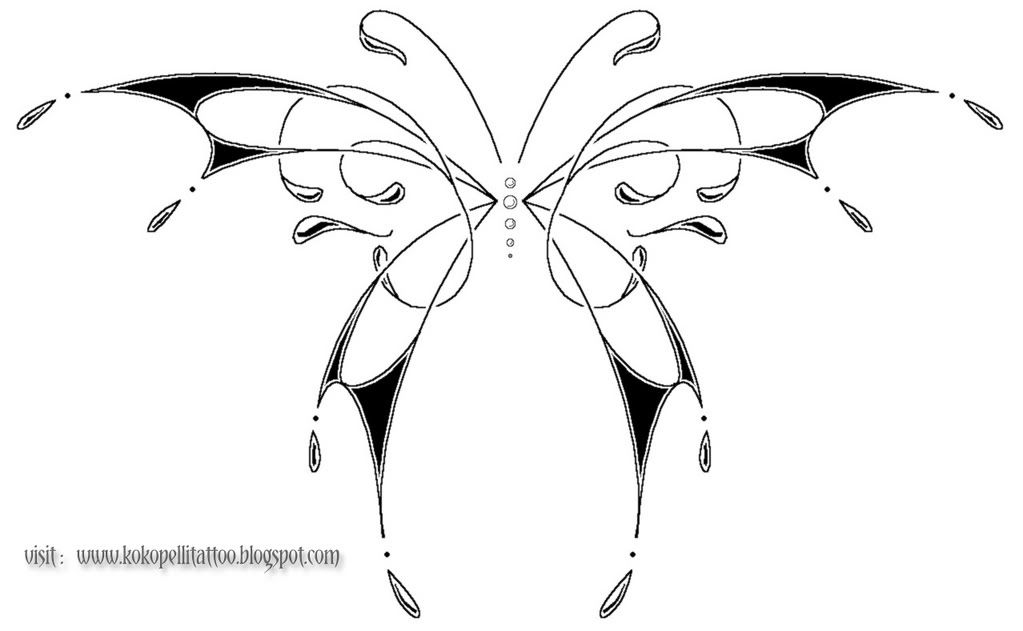Tuesday, April 24, 2007
Saturday, April 21, 2007
The Scythians
 Just after the Second World War, archeologists excavated the first of a long row of graves in the Altai Mountains of Southern Siberia.
Just after the Second World War, archeologists excavated the first of a long row of graves in the Altai Mountains of Southern Siberia.These graves had been full of permanently frozen ice, so everything in them was perfectly preserved.
Within grave number two, the archeologists found a well preserved chieftain with some fantastic tattoos. These are the oldest known picture-tattoos.
The Chieftains Tattoos are representing different totem- and game animals.
They are all done in a very distinct style, which is repeated in anything else that they made at the time. When they were carving wood, leather, metalwork, jewelry, felt applications, embroidery, weaving, etc etc. they used saw things in the same way.
This is something that is the same all over the world, and also in other times. People use the same ideas and the same way of expressing themselves in all kinds of media.
The Scythians are also very interesting for us in Scandinavia, because some hundred years later the Vikings met with the Scythians. The Vikings traveled up the Russian rivers and met with the Scythians, and the Scythians themselves have been all the way to Europe to plunder and ravage.
That way the Scythians' way of seeing things influenced the way the Vikings worked their crafts - and tattoos.

Wednesday, April 11, 2007
Tuesday, April 10, 2007
Sunday, April 8, 2007
Laser Tattoo Removal
To understand laser tattoo removal, we need to understand both tattoos and lasers. Understanding lasers is not as hard as it might seem and understanding tattoos is not as obvious as most people assume. So let's begin with the tattoo -- dont' skip this part. 
By definition, a tattoo is pigment that permanently resides in the dermis, below the epidermis, in the skin. Ink that reaches only the epidermis, the outer most layer of skin, has not penetrated deeply enough and is destined to be sloughed off during the regular process of growth that the skin routinely cycles through. Of course, during a normal tattoo process, much ink will be deposited in the epidermis, just by virtue of the fact that the needle is on the way to the dermis and just passing through. Veteran tattooees know that this colored epidermis will typically peel off and fall away fairly quickly (a few to several days, much like the skin from a sunburn), leaving the actual tattoo, the pigment in the dermis, behind. Despite the body's attempts to remove ink molecules from the dermis (scavenger white blood cells called macrophages have a crack at it, carrying them off in lymph fluid to the local lymph node) much of the ink is either captured or ignored, and stays in the dermis. Likewise, ink that travels too deeply stands a higher chance of being carried away, or being accompanied by scarring, as well as difficult to see well. So, in the molecular world of ink, it is pigment molecules in the dermis that make a tattoo.
How does a laser remove pigment molecules from the dermis?
Q-switched Nd:YAG (pronounced neodymium yag) This laser can emit a green light and removes red and orange ink the best.
Q-switched is just laser talk for high energy that’s delivered in short pulses.
In general you could probably say that an amateur tattoo which uses only black or blue ink is easier to remove. Unfortunately, amateurs also sometimes tattoo too deeply, making the pigment harder to reach. A professional tattooist will often mix colors in the tattoo process for a gradation effect, which is also more difficult to remove, but will tattoo no deeper than the dermis and at a consistent depth throughout the tattoo.
As with getting the tattoo, there will be a minimum three week interval between sessions (usually longer though) to allow the area to heal and to give the body’s immune system time to carry away the broken pigment molecules. And, yes, it is "sessions" plural. An average tattoo that is only 2 x 2 inches takes 6 to 7 months to be removed, with sessions scheduled every six to eight weeks (making that 3 or 4 sessions although ten sessions is not unheard of). And if you thought the process was painful, hold on to your wallet. Competition is rising and prices are falling but it's going to cost way more that getting the tattoo, ranging easily from the low hundreds to several hundred dollars for very small to average sized tattoos.
But with all that said, some of the before and after images of people who have had laser tattoo removal are astonishing. For some tattooed people, removal is the only alternative that they'd realistically consider (as opposed to a cover up tattoo). It becomes important to the point of not being able to feel clean or move on in life without the removal of some tattoos. Choosing a dermatologist for your outpatient procedure is as important as choosing a great tattooist. As with a tattooist, the best referral is a personal one, someone who you know who has had their tattoo removed to their satisfaction. Failing a personal referral, you could ask your personal physician. You can also try The American Society for Laser Medicine & Surgery or the American Society of Dermatologic Surgeons for recommendations. Make sure that you’re getting a medical doctor who specializes in laser surgery and it’d also be fabulous if you found somebody with thousands of tattoo removals behind them. There’s a learning curve just as with tattoo applications and experience does count. Also, be sure that you have in writing how much the total cost to you is going to be at the end of the process. On the bright side, at least you don’t have to tip!

How does a laser remove pigment molecules from the dermis?
In reality -- and to be ultra picky -- it doesn't. Instead, it helps the body do what it has always tried to do with the ink, carry it away. A laser is just light, very concentrated light, but just light. When this concentrated light falls on the molecules of pigment, they try to absorb its energy but they simply can't because it's too much. Instead, the bonds of the pigment molecules break, nearly vaporizing them, reducing them to smaller sized molecules. As when the tattoo was first applied, the macrophages rush in, scoop up the smaller molecules, and whisk them away.

Does it all sound too good to be true? In fact, there are some details that complicate matters and which cause laser removal clinics to preface their brochures, contracts, and advertisements with cautionary words to the effect that not all tattoos can be removed and that scarring is always a possible side effect. The American Academy of Dermatology says that there is a low risk of scarring when using lasers to remove a tattoo -- a 5% chance. Then again, there was a low risk of scarring associated with getting the tattoo in the first place. With any of the old style removal techniques (dermabrasion or surgery), scarring was pretty much expected.
Why would scarring occur with lasers? Laser light isn't just concentrated, it's very concentrated and it's amplified. In fact, during the removal process, there is a small popping sound which is the sound of the pigment molecules nearly vaporizing, trying to disband and expel the energy and heat they've absorbed. The laser actually pulses on and off, quickly, to make very short bursts of light, since a sustained laser could cause significant damage. Small circular white patches appear immediately on the surface of the skin and scabbing may occur later. Everybody in the room must wear safety glasses or goggles. It is, according to all accounts and my personal observations, much more painful than getting a tattoo. It is routine for the doctor to offer an anesthetic, in the form of a topical cream or local injection, before the procedure. Because of the nature of the laser treatment and the pain involved, a single session typically lasts only several minutes, if that.
How much of the tattoo ultimately gets removed depends on many different factors: size, location, ability to heal, how the tattoo was applied (amateur or professional) and how long ago it was done. Because there are potentially hundreds of different types of tattoo inks out there, and because we never seem to know which ink was being used, it’s hard to know if it can be removed. Laser removal success is color dependent, to a fairly exact degree when it comes to some colors. The three lasers most commonly used are:
Q-switched Ruby Light from this laser is, not surprisingly, red in color. Because light is absorbed by its opposite color and reflected by its same color, this laser removes most ink colors well, except for red.
Q-switched Alexandrite This laser emits a purple/red light and is therefore best for removing blue-black and green ink.

Does it all sound too good to be true? In fact, there are some details that complicate matters and which cause laser removal clinics to preface their brochures, contracts, and advertisements with cautionary words to the effect that not all tattoos can be removed and that scarring is always a possible side effect. The American Academy of Dermatology says that there is a low risk of scarring when using lasers to remove a tattoo -- a 5% chance. Then again, there was a low risk of scarring associated with getting the tattoo in the first place. With any of the old style removal techniques (dermabrasion or surgery), scarring was pretty much expected.
Why would scarring occur with lasers? Laser light isn't just concentrated, it's very concentrated and it's amplified. In fact, during the removal process, there is a small popping sound which is the sound of the pigment molecules nearly vaporizing, trying to disband and expel the energy and heat they've absorbed. The laser actually pulses on and off, quickly, to make very short bursts of light, since a sustained laser could cause significant damage. Small circular white patches appear immediately on the surface of the skin and scabbing may occur later. Everybody in the room must wear safety glasses or goggles. It is, according to all accounts and my personal observations, much more painful than getting a tattoo. It is routine for the doctor to offer an anesthetic, in the form of a topical cream or local injection, before the procedure. Because of the nature of the laser treatment and the pain involved, a single session typically lasts only several minutes, if that.
How much of the tattoo ultimately gets removed depends on many different factors: size, location, ability to heal, how the tattoo was applied (amateur or professional) and how long ago it was done. Because there are potentially hundreds of different types of tattoo inks out there, and because we never seem to know which ink was being used, it’s hard to know if it can be removed. Laser removal success is color dependent, to a fairly exact degree when it comes to some colors. The three lasers most commonly used are:
Q-switched Ruby Light from this laser is, not surprisingly, red in color. Because light is absorbed by its opposite color and reflected by its same color, this laser removes most ink colors well, except for red.
Q-switched Alexandrite This laser emits a purple/red light and is therefore best for removing blue-black and green ink.
Q-switched Nd:YAG (pronounced neodymium yag) This laser can emit a green light and removes red and orange ink the best.
Q-switched is just laser talk for high energy that’s delivered in short pulses.
In general you could probably say that an amateur tattoo which uses only black or blue ink is easier to remove. Unfortunately, amateurs also sometimes tattoo too deeply, making the pigment harder to reach. A professional tattooist will often mix colors in the tattoo process for a gradation effect, which is also more difficult to remove, but will tattoo no deeper than the dermis and at a consistent depth throughout the tattoo.
As with getting the tattoo, there will be a minimum three week interval between sessions (usually longer though) to allow the area to heal and to give the body’s immune system time to carry away the broken pigment molecules. And, yes, it is "sessions" plural. An average tattoo that is only 2 x 2 inches takes 6 to 7 months to be removed, with sessions scheduled every six to eight weeks (making that 3 or 4 sessions although ten sessions is not unheard of). And if you thought the process was painful, hold on to your wallet. Competition is rising and prices are falling but it's going to cost way more that getting the tattoo, ranging easily from the low hundreds to several hundred dollars for very small to average sized tattoos.
But with all that said, some of the before and after images of people who have had laser tattoo removal are astonishing. For some tattooed people, removal is the only alternative that they'd realistically consider (as opposed to a cover up tattoo). It becomes important to the point of not being able to feel clean or move on in life without the removal of some tattoos. Choosing a dermatologist for your outpatient procedure is as important as choosing a great tattooist. As with a tattooist, the best referral is a personal one, someone who you know who has had their tattoo removed to their satisfaction. Failing a personal referral, you could ask your personal physician. You can also try The American Society for Laser Medicine & Surgery or the American Society of Dermatologic Surgeons for recommendations. Make sure that you’re getting a medical doctor who specializes in laser surgery and it’d also be fabulous if you found somebody with thousands of tattoo removals behind them. There’s a learning curve just as with tattoo applications and experience does count. Also, be sure that you have in writing how much the total cost to you is going to be at the end of the process. On the bright side, at least you don’t have to tip!
Saturday, April 7, 2007
Show Us Your Tattoo

Why don't you SHOW your tattoo to us!
Just upload your tattoo's picture to any picture hosting site.
(example: http://www.tinypic.com/ , http://www.imageshack.us/ )
Copy direct link, and comment it here.
Don't forget to give us your name/age/location
Just upload your tattoo's picture to any picture hosting site.
(example: http://www.tinypic.com/ , http://www.imageshack.us/ )
Copy direct link, and comment it here.
Don't forget to give us your name/age/location
Thursday, April 5, 2007
TATTOO CARE
 Tattooing, a technique of marking the skin with colors, has been practiced since antiquity. Now this ancient art is enjoying a renaissance. Movie, television and sports stars have begun sporting Tattoos, and others are following their lead.
Tattooing, a technique of marking the skin with colors, has been practiced since antiquity. Now this ancient art is enjoying a renaissance. Movie, television and sports stars have begun sporting Tattoos, and others are following their lead.The Tattoo machine, in a simplified explanation, operates like a mini-sewing machine: the Tattoo needle that is attached to the Tattoo needle bar moves up and down very rapidly as it penetrates the superficial (epidermis) and the middle layer (dermis) of the skin. This process creates a superficial abrasion to the skin that is only about as deep as the thickness of your fingernail. Properly and professionally done, Tattoos cause minimal trauma to the skin and heal very quickly. Depending on the individuals care and reaction to the process, it may take from one to two weeks average time to heal over nicely.
The most critical time to control and direct the healing process for a new Tattoo is from the completion of the Tattoo until there is no more oozing of fluid from the Tattoo.
This requires you to wipe off oozing fluids ( which appear as droplets on the surface ) until fluids no longer reappear.
This may take several wiping every 15 minutes immediately after getting a Tattoo.
Timing is critical to prevent dead cells from accumulating, sticking and drying on the surface of the Tattooed area.
Allowing Tattoos to dry prolongs the healing time, producing a dry scab and loss of ink.
Clinical studies have demonstrated that wounds moistened with ointment heal faster, produce less dry scabbing and consequently keeps more Tattoo ink in the skin which heal brighter and sharper looking.
As soon as you get home from the Tattoo shop ( no longer than 2 hours ) follow these instructions:
1. As soon as you get home remove bandage, wipe off the ointment and oozing body fluid with a tissue.
DO NOT WASH
Water content of the Tattooed area is a major factor in the speed of healing.
KEEP DRY !
2. Apply a thin layer of A&D ointment, Bacitracin, or comparable product.
The biggest problem is not the selection of ointment ( all comparable ointments of this type will produce good healing ). Getting any ointment and using it as directed and having you follow these instructions is critical for promoting proper care and healing for your new Tattoo. This is more important than fretting over what type of ointment to purchase.
A&D ointment is the preferred product to use due to the fact that some people have an allergic reaction to the zinc and other ingredients in Bacitracin or Neosporin ointment. If you are not allergic to these products they are fine to use. Otherwise buy and use A&D ointment because it contains none of these allergic reaction causing ingredients.
BUY A&D OINTMENT IF AVAILABLE.
3. Wait 15 minutes and see if bubbles of fluid appear on the surface of the Tattooed area.
4. If they do, wipe of with a tissue and reapply ointment.
5. REPEAT THIS TILL NO MORE BUBBLES APPEAR ( 2 to 5 times ).
STOP AND READ STEP 1 TO 5 AGAIN.
THE BETTER YOU CARE FOR YOUR NEW TATTOO
IMMEDIATELY AFTER GETTING IT
THE BETTER IT WILL TURN OUT FOR THE REST OF YOUR LIFE !
IT IS CRITICAL TO REMOVE FLUID FROM THE TATTOO AND KEEP MOIST DURING THE FIRST FEW HOURS AFTER GETTING YOUR TATTOO.
You can use your CLEAN finger tips to apply the ointment.
DO NOT BANDAGE.
When oozing stops, apply a thin layer of ointment 4 times a day.
No skin to skin contact with people or pets.
No scratching.
No picking.
No peeling.
No swimming.
No sauna.
No Jacuzzi.
No tub.
No sun.
No tanning salon.
No contact sports.
No shaving.
Be very careful at work, keep clean.
If you work in a Hospital or other medical or clinical setting ( nursing home, doctors, dental office, labs ) be very careful not to come into contact with anything in the building with your new Tattoo. Bandage with a sterile NON-STICK bandage while at work to protect from any such accidental contact. Use surgical type hand scrub at home after work before caring for Tattoo.
The better you care for your new Tattoo immediately after you get it the better it will heal and look for the rest of your life.
At night, just before bed, wipe the area down lightly with alcohol to help control microorganisms on the surface of the skin during your hours of sleep.
You must keep the Tattoo dry during showers.
Coat with Vaseline ONLY during showers so as not to allow Tattoo to get soaking wet. Wipe off after shower.
After 2 days stop using the A&D ointment and SWITCH TO A MOISTURIZING SKIN CREAM OR LOTION ( a dry skin or hand lotion ).
Lubriderm is the preferred hand or skin ointment, lotion to purchase.
BUY LUBRIDERM IF AVAILABLE.
The type of skin lotion you purchase is not as important as the act of actually getting ointment and using it. Buy a brand name lotion preferably without a lot of fragrances or odd ingredients, purchase a quality name brand, such as: Vaseline intensive care dry skin lotion, Jergens, Nivia, Lubriderm.
Lanolin in some lotions causes allergic reactions in some people.
Bee’s wax in some lotions can clog pores and is not recommended.
Use moisturizing lotion for 3 to 5 times a day for another 4 or 5 days.
Keep very lightly moist, DO NOT ALLOW TATTOO TO DRY OUT.
It is true that Petroleum jelly or any petroleum based products tend to drain the color from a Tattoo.
Please do not be stingy with the purchase of Tattoo aftercare products. You probably will spend a lot of money for a nice Tattoo, so the amount spent on care products is negligible.
Your New Tattoo is a wound that MUST BE PROPERLY CARED FOR!!
Some people can be allergic to the ingredients in hand lotions and antibiotic ointments.
A reaction can appear as small pimples or a redness around the Tattoo area.
If this occurs, discontinue use of this type ointment, Wash with alcohol, let dry for the day and switch to Vaseline lotion or a different brand skin lotion ( look at label, do not use same ingredients as in reactive brand).
Some people may have an adverse reaction to the particular pigment used in the Tattoo ink this may result in swelling or itching. This can usually be relieved by using a topical corticosteroid cream and keeping the Tattoo out of direct sunlight (which may make the reaction worse).
Also it is noted that that some people have a allergic reaction that occurs in certain colors when exposed to sunlight. This is rare and if it does occur do not itch the area as this will only increase the reaction. A cold compress pack and the application of a topical corticosteroid cream should reduce the swelling.
If you have a medical condition, are aware of allergic reations or are on any medications, please notify your Tattooist.
If you experience any problems with the aftercare instructions or products recommended here, discontinue use immediately.
Wednesday, April 4, 2007
History Of Tattoo
Tattooing started in Egypt with the Nubians and than progressed to Japan and other Asian cultures. It made its way to the Aristocrats of London in the 1700's when a heavily tattooed Polynesian man named Omai was introduced to London society by way of Captain Cook. Small tattoos in discreet places were popular. After the introduction of the electric tattooing machine in 1891 it became unpopular among the upper-class due to the fact that it was now cheaper to obtain a tattoo.
The word tattoo comes from many different locations. It is most believed to be derived from the Tahitian word "tatu," which means to mark and the Polynesian word "ta," which means striking something.
The first electric tattoo machine was invented by Samuel O'reilly in 1891.
Tattoos made their debut in America in Chatham Square in New York City. Tattooing flourished in this area until about the 1920's with the onset of prohibition. At this time tattooing declined in this area and the mecca was moved across the water to Coney Island, New York. With the outbreak of hepatitis and other diseases tattooing became illegal in the state of New York. After health issues were taken care of it became popular once again. Today it is considered a "fine art" form.
The word tattoo comes from many different locations. It is most believed to be derived from the Tahitian word "tatu," which means to mark and the Polynesian word "ta," which means striking something.
The first electric tattoo machine was invented by Samuel O'reilly in 1891.
Tattoos made their debut in America in Chatham Square in New York City. Tattooing flourished in this area until about the 1920's with the onset of prohibition. At this time tattooing declined in this area and the mecca was moved across the water to Coney Island, New York. With the outbreak of hepatitis and other diseases tattooing became illegal in the state of New York. After health issues were taken care of it became popular once again. Today it is considered a "fine art" form.
Tuesday, April 3, 2007
Maori Tattoos are Cultural and Hip
 Celebrities like boxer Mike Tyson and musician Robbie Williams have made Maori tattoos decidedly hip by sporting these striking, distinctive designs on their bodies.
Celebrities like boxer Mike Tyson and musician Robbie Williams have made Maori tattoos decidedly hip by sporting these striking, distinctive designs on their bodies.But most people who submit themselves to the Maori tattoo artist's needle do so in the name of cultural identity rather than fashion.
In Australia, the art form is thriving because of the growing number of Maori living across the Tasman, says traditional Maori tattoo expert, Tania Simpson.
Simpson is the executive director of the Maori consulting company Oceania Group, which recently travelled to Sydney to give a seminar on Maori tattoo art, ahead of other talks in Melbourne and Brisbane.
She says the growing number of Maori here, many of them second or third generation Australians, view getting a traditional tattoo as a way of reconnecting with their cultural heritage.
"It is the younger generation and mostly it is arms and legs," she says.
Maori tattoo, or Ta Moko, is loaded with symbolism and has multiple layers of meaning.
Simpson's own tattoos represent two important events in her life - marriage and childbirth.
The curls of a tattooed wedding band on her arm represent her family tribe, while the Stingrays tattooed on the small of her back symbolise herself and her children.
"They might show what trade they do ... Mine is a wedding band ... you can create your own meaning."
Films like Once Were Warriors have done much to popularise Maori tattooing, arguably the most recognisable style globally when it comes to indigenous tattoo art, as have celebrities like Tyson and Williams.
But the danger in this, says Simpson, is that people may get a Maori tattoo without appreciating its cultural significance.
In Los Angeles, you could see a man walk down the street wearing a Maori tattoo that is supposed to be worn on a woman, she says - something guaranteed to produce "cultural cringe" amongst Maori.
In Australia, a large number of tattoo artists have moved over here and are starting to build up a network, charging on average $150 an hour for the work.
Sydney-based artist Tuta Tuheke, 39, who lives in Waterloo, says Maori tattoo art, once a dying art form, is experiencing a renaissance.
There are currently about five Maori tattoo artists in every state, he says.
They mainly work on people who are predominantly Maori and can't go home and get a tattoo.
With a background in carving and graphic design, Tuheke, a practitioner from New Zealand's King Country in the North Island, says when he began as a tattoo artist several years ago, there would be four clients a week.
Now there are three a day.
This increasing popularity brings responsibility for the artist, he says.
"The Maori tattoo is part of a cultural religion and worn like a crucifix ... When you step outside New Zealand, as a practitioner, you have a responsibility."
Ta Moko is rooted in Polynesian culture and symbolises tribal connections and significant personal events.
In contrast to the negative connotations tattoos can have in western society, having a tattoo is considered a great honour amongst Maori, Tuheke says.
For a woman to have a facial tattoo depends on her ranking.
Worn on the face, buttocks and chin by men and the lips and shoulders by women, tattoos were traditionally done when a person reached puberty.
Artists used a chisel made from a albatross bone and gum and vegetation dye mixed with oil for the pigment.
The tattoo artist himself was considered amongst the most honoured of all members of Maori society because he worked on the most sacred part of the body, namely the head.
Traditionally, the left side of the face relates to the father's history, with the right side relating to the mother.
After tattooing, sexual intimacy and solid food were not allowed as long as the face was still swollen.
Asked what he thinks about celebrities wearing Maori tattoos, Tuheke answers carefully.
"I think artists identify with the beauty of the symbols," he says.
But he says he is choosey about who he works on.
"I operate on only those who come from the right angle with the right intentions. I have to be fussy because of the potency it holds." (AAP)

Subscribe to:
Comments (Atom)





